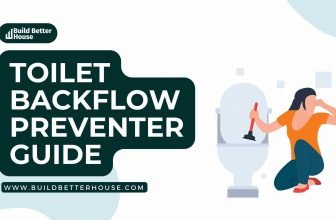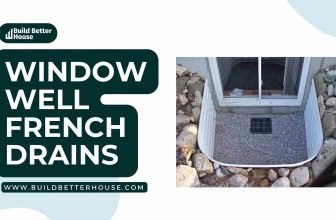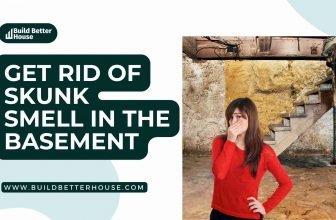Dry Well Vs. French Drain: Which is the Best Solution?

You’ve probably heard a lot of debate regarding dry wells vs. french drains regarding fixing drainage problems in your property.
Any structure constructed on a sloping terrain exponentially increases the risk of water accumulation. In addition to being inconvenient, this can be disastrous because it increases the likelihood that mold and mildew will grow in a home, and other problems related to excess moisture will also arise. A subsurface drainage system is required to avoid this.
Although in the debate about dry well vs. french drain, where both are subsurface drainage systems, they are used in different situations and serve other functions.
However, deciding which is better for your situation can feel like an uphill battle due to the numerous variables. This article, dry well vs. french drain, will go over the benefits and drawbacks of each system, as well as common installation considerations.
What Is A Dry Well?
A dry well is a pipe that connects surface water to aquifers. Since they are too deep to support the weight of surface water, dry wells are usually 30 to 70 feet deep and 3 feet wide at the surface and filled with gravel or stone or left empty or lined with crushed stone or rock.
Also, dry wells excavate spaces lined with crushed stone or gravel that divert water from houses and are used as a standalone drainage system or as a more extensive drainage system component. A dry well usually installs as an alternative to a french drain.
What Is A French Drain?
A French drain is a subsurface drainage system buried beneath the earth’s surface to divert water away from a structure or toward a dry well.
French drains are commonly used to divert water away from structures when the groundwater table is high, as in coastal areas and flood plains.
Dry Well vs. French Drain: How To Install
Although dry wells and french drains are very different but address the same problems, there are some popular myths about how to install them. Let’s look at the proper installation procedure:
Dry well: Installing a dry well is a relatively straightforward feature. Finding a spot for your dry well is the first step. It should be placed as far from your home as possible while being reachable.
It could be best to put it in a location with a high groundwater table. To install the well and maintain it later, you’ll want to make sure the site has enough space around it. The best location for a dry well is below the groundwater table.
This will make it possible for the well to draw water down. After deciding the best place for the well, you should drill a hole six to eight feet deep. The gap’s breadth must be roughly equal to the well’s diameter.
The fix will then be filled with gravel up to the groundwater table level. The dry well will then be installed and connected to your sump pump or drain.
French drain: Finding a site for the drain is the first step in installing a french drain. Installing it in an area with a high water table is recommended. The French drain can be installed above or below ground, but below-ground installations are standard. They are then creating a trench close to your house.
The drain’s diameter should be roughly equal to the width of the trench. Trench length should be at least ten times greater than trench depth. Lay gravel along the trench’s bottom. The french drain will be placed and attached to an absorption ditch.
Dry Well vs. French Drain: Installation Cost
A dry well can be installed for as little as $1,500, but the average cost is $3,113. The quantity and size of your yard and the labor rate charged by the contractor all influence installation prices. Because installing a dry well requires a lot of time and work, labor is a significant cost component.
Additionally, a permit is required to install a dry well, typically costing $50. Some municipalities may not require permits, so check your local building codes and consult your contractor. Contractors and builder-owners use concrete, stone, and plastic, which make up the material costs.
French drain installation costs $4,500 on average, but for specific properties, they can reach nearly $15,000. So long as they don’t have a large property, most homeowners will only spend up to $5,000. French drains may save homeowners a tonne of money on landscaping expenses, so many people think they’re worth the investment.
Your home’s structure may be harmed by soil erosion, which could necessitate costly foundation repairs. Without the proper damage, excessive soil erosion might cost you $8,500 or more to rebuild your foundation. Many homeowners find their gutters insufficient, especially in a region with a lot of rain.
Dry Well vs. French Drain: What’s The Difference?
French drains and dry wells reduce flooding and surface water percolation, but they have different depths, costs, installation requirements, and issues affecting your yard’s drainage. So, compare them and choose the best one to solve your drainage problem.
Location
French drains installed around gardens o drain surface water, lawns, driveways, and patios. Still, they can be installed on the site’s highest and lowest points and near the foundations to remove standing water. On the other hand, dry wells are always installed in low-lying areas or garden corners away from the house.
Perform
French drain systems to divert water to low-lying drainage ditches and pools, preventing flooding and marshiness on the entire site. On the other hand, a dry well accepts water from various surface and roof runoff drainage systems holds it, then percolates it into the surrounding soil and gravel.
Repair ease
While french drains are relatively simple to repair and require regular snaking and declogging of the french drain pipe to function appropriately, dry wells are more complicated. They must be re-excavated and filled when clogged.
Structure
French drains are simple: a small perforated pipe in the trench with landscape fabric, gravel, and soil. On the other hand, dry wells are long stone or concrete tubes with thicker walls that hold and store water before draining into the surrounding soil.
French drains and dry wells solve the same issues and are used frequently, but they are entirely distinct methods. Where there is a lot of rain and flooding, it must be a fit french drain. They ought to be ten times deeper than the dirt around them. French drains are far more efficient at handling excess water than dry wells, which have a much higher capacity.
Can We Install A Dry Well And A French Drain Together?
Many individuals need clarification on the dry well vs. french drain discussion and wonder if they can install both simultaneously.
Installing a french drain and a dry well is appropriate in particular situations. Both dry wells and french drains can be used to dry out a wet region on your property while simultaneously channeling water away from it.
Installing dry wells around the property’s perimeter and having them drain into a french drainage system in another area of your yard that will direct surface runoff into the dry well pit with a downspout drain is the best course of action in this situation.
An illustration of this would be to use a dry well to dry out a garden while diverting roof runoff into your french drain system.
Which Is Better, Dry Well vs. French Drain?
There are several things to consider when considering dry wells vs. french drains as the ideal systems for your house. The kind of soil where the system will be installed, the existence of groundwater, and the size and layout of the property are some of the deciding elements.
Both the dry well vs. french drain function generally similarly, with particular circumstances favoring various features of each system.
While dry wells can be utilized in some locations, french drains can also be used in those locations. They are more effective at controlling water flow, particularly in more prominent regions.
Summing up
You have two choices for waterproofing your property: dry well vs. french drain; Both of these characteristics work to keep rainfall from reaching the soil and harming your home.
In the discussion on dry well vs. french drain, the most significant option for locations with a high groundwater table is a dry well, and the best option for areas at risk of floods is a french drain. Both can be used with sump pumps to divert water away from your home. Make sure to pick the finest choice for your needs and the terrain on your property when deciding to waterproof it with a dry well or french drain.
Read more: Fluidmaster vs Korky: Which Toilet Replacement Is The Best?






